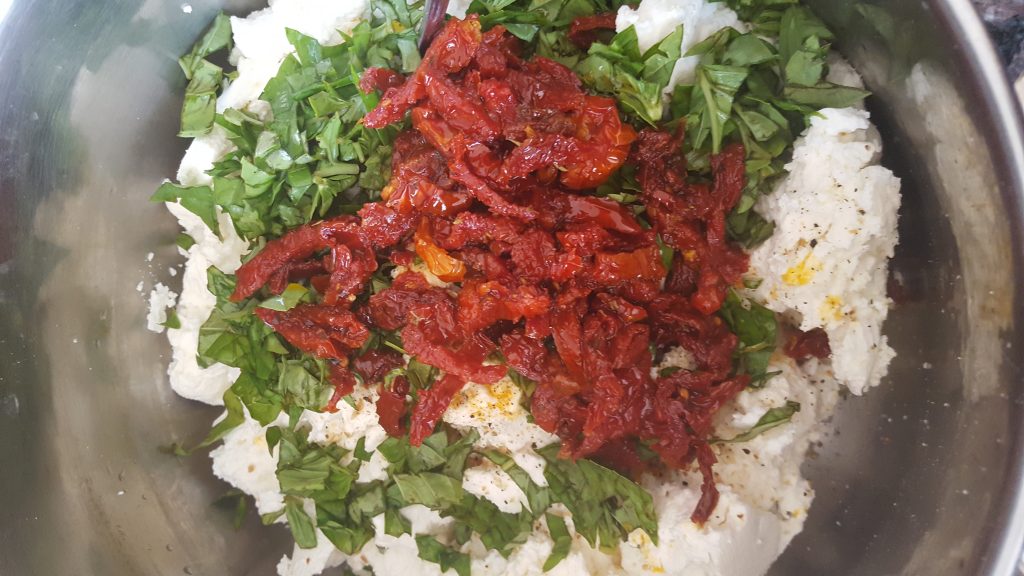
If you’ve got goats you’ve probably also had an issue with using up all of the milk. We get 1 to 1 1/2 gallons a day and there’s no way we can use all of that in our every day life. So on the weekends I use all the excess from the week to make cheese. Lately chevre, the creamy, soft, fresh goat cheese, has been my go-to recipe, especially on the weekends when I’m short on time. The nice thing about chevre is not only that it’s easy to make but that you can flavor it in any number of ways from sweet to savory and it freezes well.
What you’ll need:
- A large pot that will hold at least a gallon of milk
- Thermometer
- Slotted Spoon
- Cheesecloth
- Large colander
- Chevre molds (optional)
- Large mixing bowl
- Wax paper and aluminum foil if freezing
Ingredients:
- 1 gallon of goat milk (not ultra-pasteurized)
- 1/8 tsp Chevre culture*
- 3 drops of Rennet* dissolved in 1/4 cup cool non-chlorinated water
- Calcium chloride (optional for cold stored pasteurized milk – will increase yield)
- 2 tsp salt
- Flavorings of your choice
* There are two types of cultures that you can get for chevre. There is the most popular culture through cheesemaking.com that includes the rennet. If you get this one you do not need to add additional rennet. If you purchase a different culture that does not contain rennet then use the amount specified above.
I prefer to use pasteurized goat milk for all fresh cheeses. I’ll only use raw milk for cheeses that are aged for 60 days or more. For those that have goats and are interested in pasteurizing you will heat the milk to 165* F for 30 seconds and then rapidly cool it in a water bath.
If you choose to use raw milk make sure to sanitize everything the milk will be in contact with, including your pot. If you are pasteurizing just make sure to sanitize everything that the milk will be in contact with when it’s cooler than 140* F. Easiest way is to simply use boiling water. If you want to use something different I highly recommend StarSan food grade acid sanitizer. This sanitizer doesn’t lose it’s effectiveness over time like bleach so we pre-mix it a gallon at a time and use it in a sprayer. It also keeps working after it dries so you can sanitize everything ahead of time.
- Heat (or cool if pasteurizing beforehand) milk to 86* F. Remove from heat.
- Add calcium chloride if using and mix in well.
- Sprinkle the culture over the milk and allow to rest for at least 2 minutes. This allows the culture to rehydrate so that it doesn’t clump up and sink to the bottom. Once it’s rehydrated stir into the milk.
- Stir in rennet if using.
- Let sit for 12 hours at 72*F.
- Boil your cheesecloth to sanitize and sanitize your colander and slotted spoon. Line the colander with the cheesecloth and with your slotted spoon gently transfer the curds to the colander.
- Tie up your cheesecloth and hang to allow it to drain. Drain for 6-12 hours depending on what texture you prefer.
- Once done draining transfer curds to mixing bowl and add salt and whatever herbs, spices, or flavorings you want. I allow this to rest for 24 hours in the fridge to allow the flavors to blend.
- If you plan to freeze, shape chevre either by hand or in a mold. Wrap in wax paper and then in foil. Freeze in Ziploc bags. Will remain good for up to a year in the freezer.

